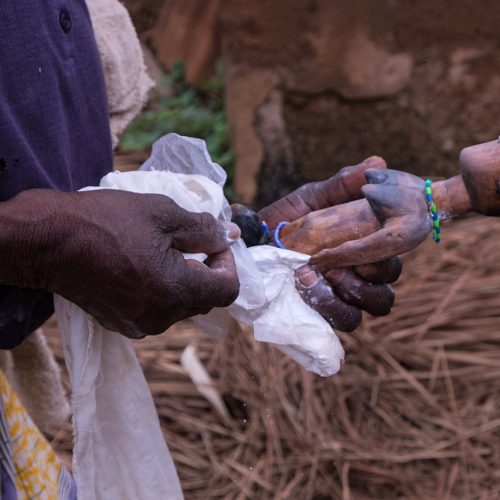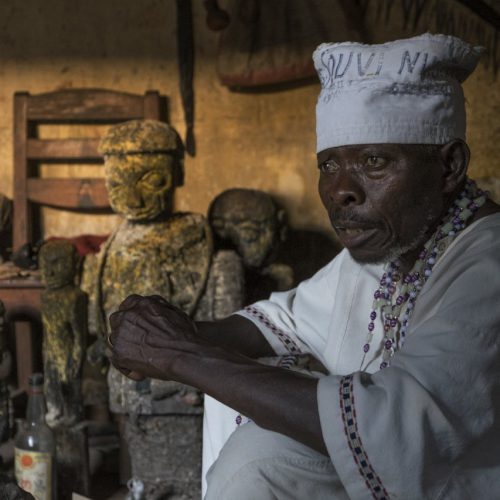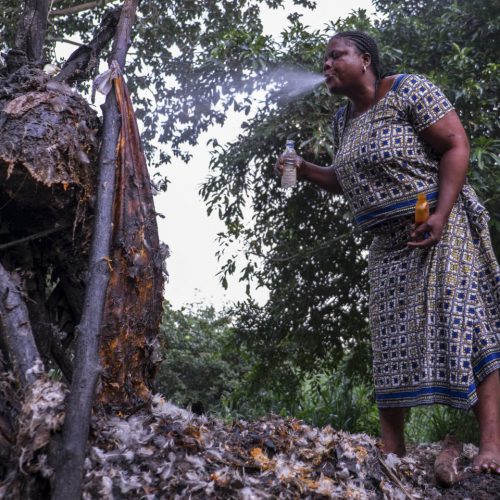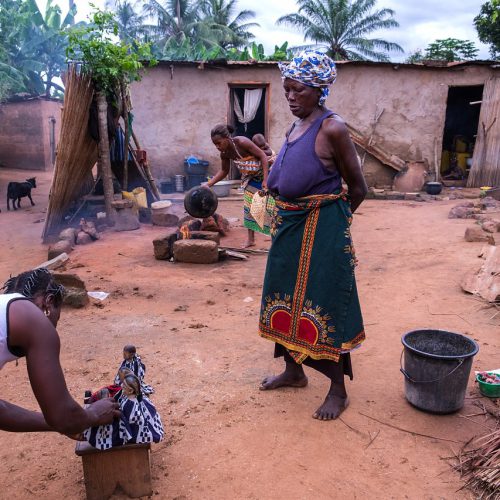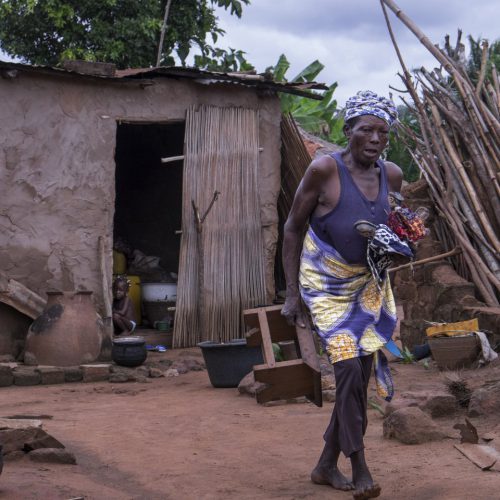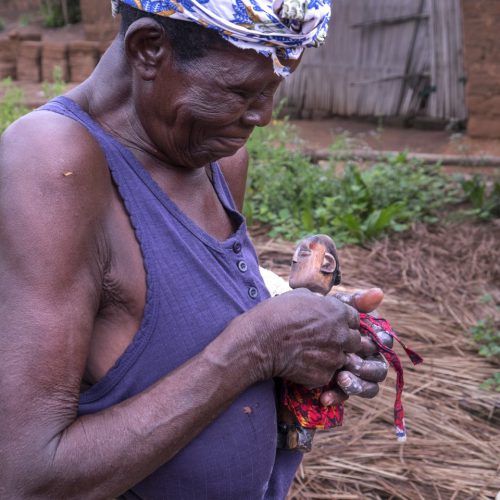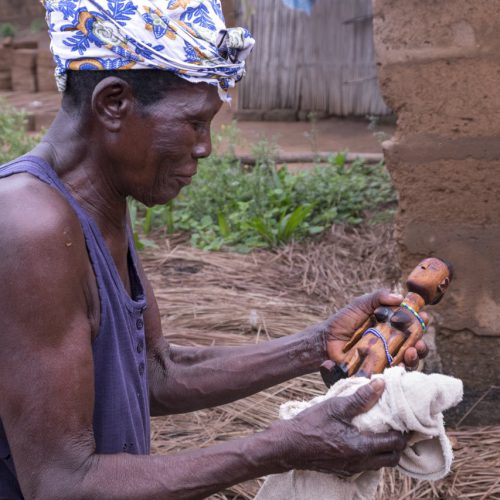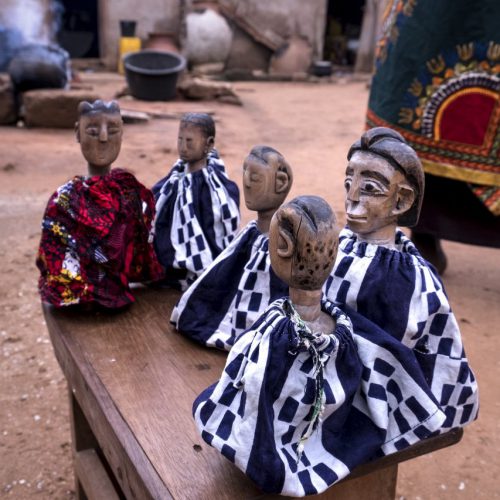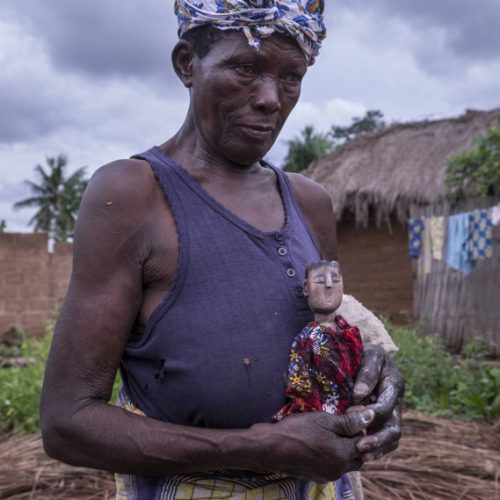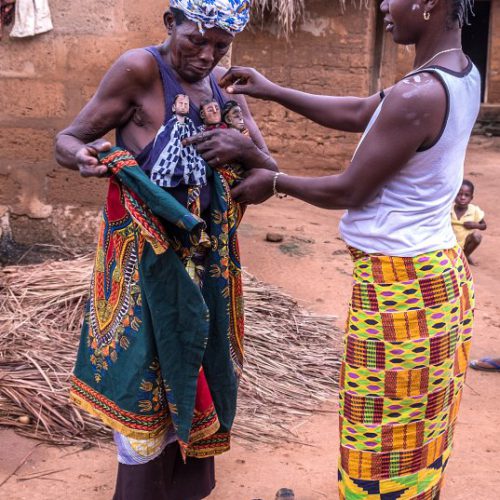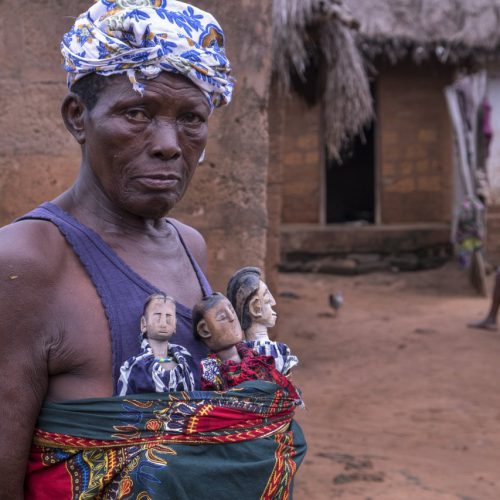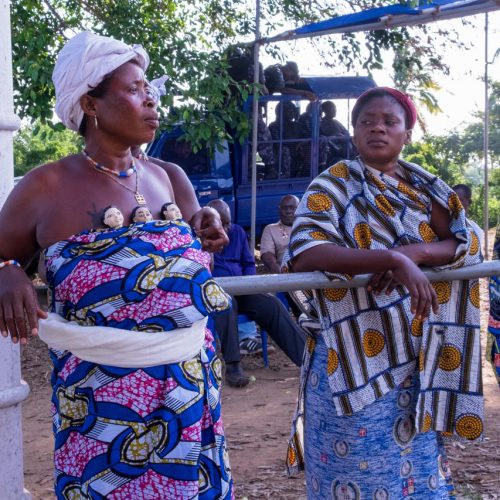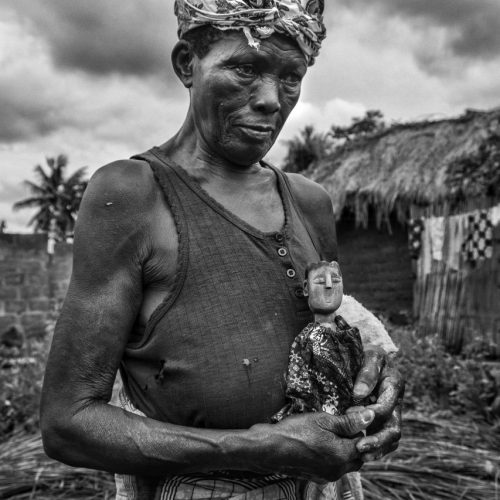חיי הנצח של תאומים בדת הוודו
התחרות השנתית של PSA בחטיבת פוטוג'ורנליזם - "PHOTOSTORY 2017" . הסידרה הזוכה בציון לשבח.
אחת לשנה מכריז אירגון הצלמים הבינלאומי, PSA ,היושב בארה"ב על תחרויות סדרות צילומיות בכל אחת מהחטיבות שלו.
הסדרה המצולמת, צריכה לעסוק בסיפור יחודי, או נושא מסויים. כל אחת מהתמונות בהסדרה אמורה להיות משוייכת למשפט מהמלל הנלווה אל הצילומים.
באירוע השנתי המרכזי המתקיים בכל שנה באתר אחר בארה"ב, מכריזים את שמות הזוכים אשר הסדרות שלהם נבחרו על ידי חבר השופטים.
Eligibility & Rules
A Digital Photo Story presents a series of images (maximum of 20), with optional text to communicate or tell a single story. No special effects are allowed. The script shall indicate the image number to which each sentence is tied and shall be mailed with the CD.
A Multi-Media Photo Story may include music and/or narration and any number of images, but may not be longer than five (5) minutes. The maker's name must not appear within, but should be labeled on the submitted disc. (All music must be royalty free. Log in and see Royalty Free Music in Members Only area for suggested sources. Essays that do not follow the music guidelines found on this page are not eligible for this contest. ) It is judged primarily for story line as well as presentation, enhanced by layout, the size and prominence of key images, the juxtaposition of close-ups and long shots and of verticals and horizontals, the use of space, and the overall composition.
A Print Photo Story may include a minimum of three (3) and a maximum of eight (8) individual prints, mounted on a board no larger that 16×20 inches. Captions and text, not to exceed 200 words, may be provided to enhance the story line and need not necessarily be tied to an individual image. It is judged on the overall impact of the total presentation
A Photo Book shows a series of images, with text interspersed. Maximum of 25 pages. It is judged on the story line and overall impact of the total presentation.
The name and contact information of the entrant must be submitted with the entry but may not appear on the judged part of the entry. Entries must be mailed in time to reach the director before the deadline of Sept 1, 2018.
Each entrant may enter up to two (2) stories in each of the four (4) sections. No photo story may be entered that has won an award in a previous PJ Photo Story Competition. A photo story may not be entered more than twice in the same format. A specific essay or travelette may be submitted to only one PSA division each year. The same essay or travelette may be submitted to another division's essay competition in another year.
All electronic entries (CD, DVD or flash drive) shall require no special software to be viewed.
Awards
A gold medal is presented to the best Photo Story and a silver medal is awarded in each section, one for the runner-up in the section from which the gold came and silver medals for the best entry in each of the other sections. HM ribbons are presented based on the number of entries and the discretion of the judges.
All Award winning stories will receive four acceptance credits and two title credits for stars 1-5, including Honorable Mentions in Photojournalism.
Acceptance credits and title credits can be used towards Photojournalism Galaxy levels 1-10 as one title accepted three times, subject to galaxy rules.
Acceptance and title credits are not eligible for Diamond Levels in Photojournalism.
PSA Who's Who credit is not earned with acceptances from the Photo Story Competition
הטכסט הנלווה אל הסידרה
איך חיים תאומים לנצח בדת הוודו
השכמה לאחד הבקרים בכפר בדווידי, במדינת טוגו, הכל שקט ורגוע , רק שכל יום נופלת לי איזו הפתעה וחוויה צילומית.
הבקר הוזמנתי לבקר אצל אישה זקנה שזה יום הטיפול ב "בובות התאומים" שהופקדו בידיה.
בטוגו, אצל המאמינים בדת הוודו, קיימת אמונה שתאומים שנולדים, יש להם חשיבות עליונה בחיי המשפחה המורחבת. על כן בעת פטירתו של אחד התאומים, המשפחה דואגת להגיע לשוק הפטיש FETISH לרכוש בובת עץ מיוחדת שנועדה לצורך כך
- How twins live forever in the Voodoo religion
I wake up one morning in the Dwidi village in the country of Togo where all around is quite and tranquil. However, each passing day holds in its fold a new photographic experience.
This morning, I was invited to visit an old woman who tends the “Twin Dolls” left in her care.
The adherents of the voodoo religion in Togo believe that twins are of paramount importance not only to the life of the family into which they were born, but among the branches of the same family, read: their relatives as well. Therefore, upon the death of one of the twins, its parents make sure to purchase a special male or female wooden doll from the “Fetish Market”—matching the departed twin’s sex (1). The Doll is brought to a priest–male or female—(2) who holds a ceremony (3) after which he or she blesses the Doll which thereafter represents a stand-in for the departed twin. From this phase on, the mother must tend the Doll as if it is the real twin who continues to be an integral member of the family (4).
I met Fuya Ahamesi (5) who was tending the wooden twins in her house’s courtyard and found out that she was taking care of five wooden twin dolls (6). I was puzzled as to how she had accumulated so many twins who had left this world. The woman informed me that two of the twins were her own sisters. After her mother’s death, the local shaman consulted an oracle who commanded him to delegate the responsibility of tending the departed sisters to Fuya. She was also entrusted with caring for her uncles’ departed twins. Fuya related that after her own passing, the oracle would decide to whom to delegate the task of tending the dolls. It is possible that the oracle would appoint one of her granddaughters to carry on the task (7). Thus, with the responsibility of caring for the twins passing from one generation to the other, the twins would continue to “live” throughout the future generations.
Later, Fuya came out of her hut carrying the dolls. She undressed them one by one (8), washed them with water(9), dried them up with a towel (10), then spread talcum powder on them. Finally, she dressed them up in their individual dresses (11) and placed them on a small table. A while later, she held each doll with great compassion (12). She then tucked each doll into her belt, assisted by one of her daughters (13), and commenced her morning stroll with them around the village (14 , 15).
The villagers were not surprised to see Fuya carrying the dolls in her belt because they are accustomed to and familiar with this tradition. Such dolls are usually seen in social get-togethers where the women bring along these dolls as if they are still part of the family (16).
Had I not seen this unique phenomenon with my own eyes, I would never have believed a single word.
Yehuda Sameach EPSA, EFIAP
Hashiryon st. 13/26
Ness – Ziona
ISRAEL


